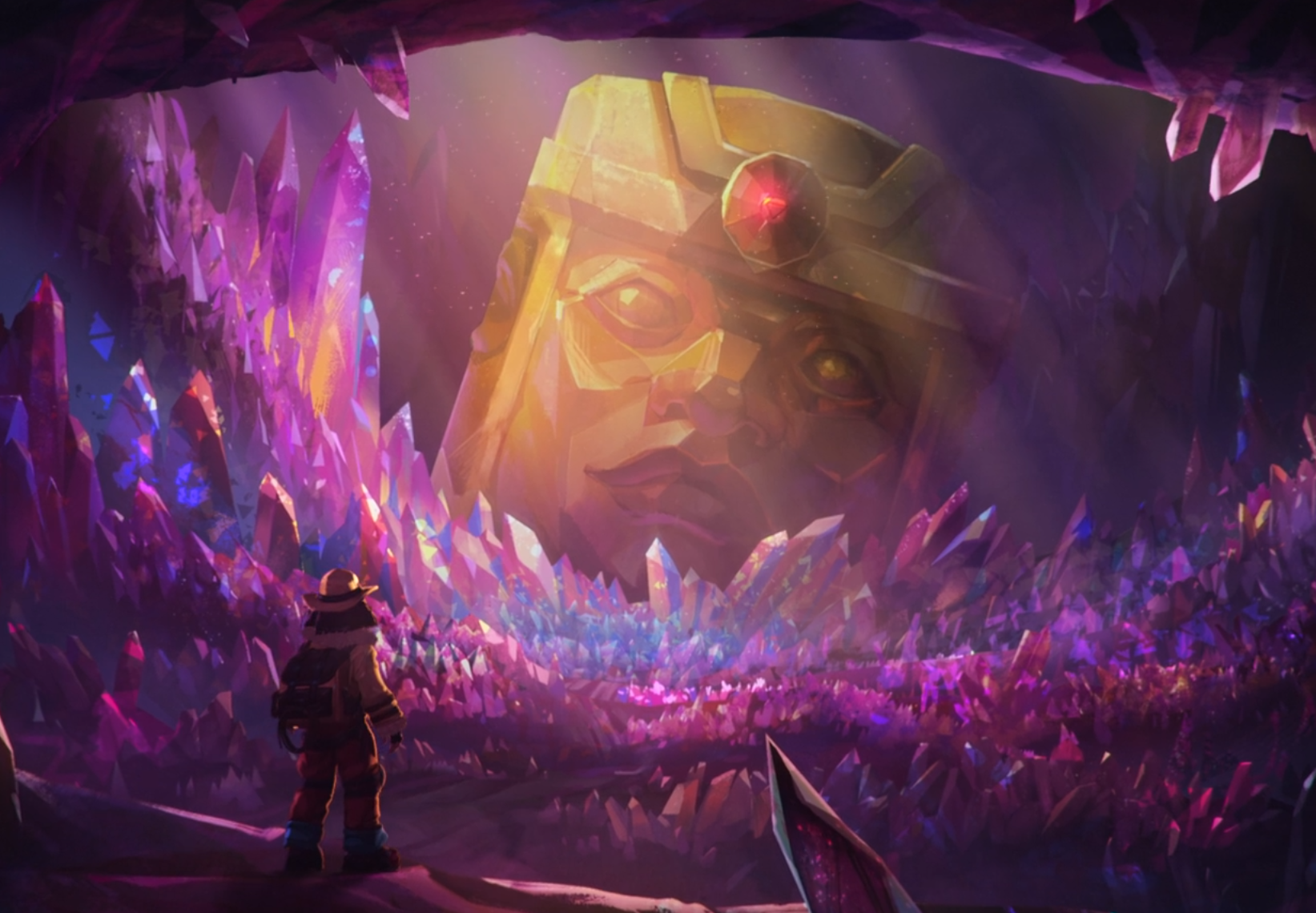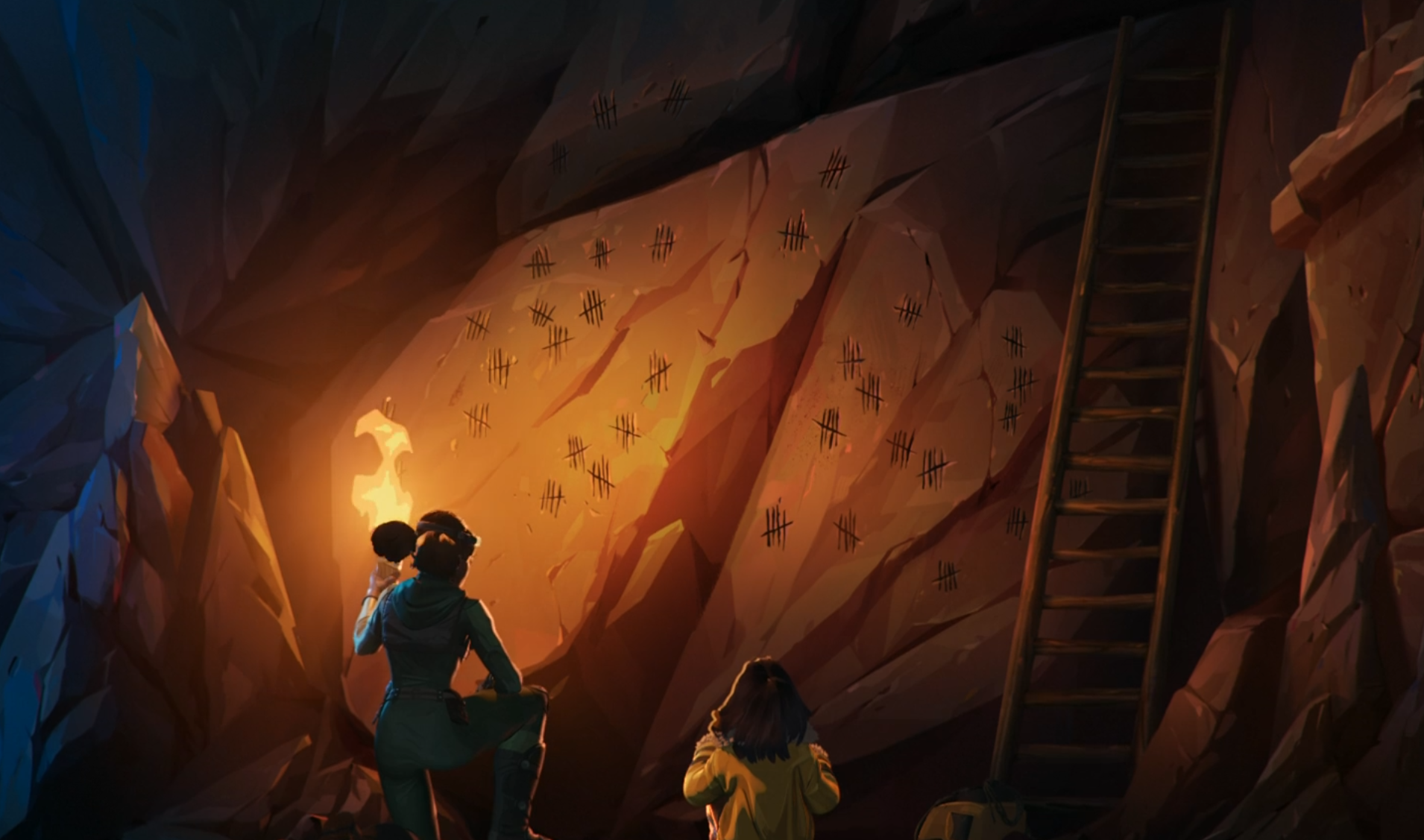Secret Level Makes A Roguelike Existential
"Like my heart is tired, or something."

I didn't think, after finishing Spelunky, that the franchise would have more to say. Creator Derek Yu gave an interview in a documentary where he believed the cave explorer was the villain, raiding artifacts rather than donating them to a museum. Another video showed that even he couldn't beat the HD version on the first try.
Amazon's series Secret Level had another interpretation. Each short episode puts a new spin on different games. The Spelunky episode asks about the journey, rather than the many frustrations.
Tallying the cost
Outside a magical underground chamber, Ana Spelunky regenerates after another death. She and Liz Mutton discuss if dying over and over again changes you as a person. Liz marks the number of times that she has died, while Ana keeps track in her head. Though they revive outside the underground world, both have vestiges of pain that come from each death.
Being new to this routine, Ana believes that she can shake off the pain and try again. Liz tries telling her it's not that easy. Your body may revive, but you're not the same person going in and out. Each death affects you, which is why Liz marks her attempts by scratching tally marks on the wall from each painful death. Ana dismisses her because she points out that her body doesn't have any lingering effects.
Unfortunately, Liz is proven right. Ana dies 82 times. While some runs show her making great progress, other times a dart or tiki statue gets her in the early mine levels. She gets frustrated, understandably. I relate all too well as someone who thought they mastered the mines, only to suffer a stupid death yet again. Liz empathizes, saying that she also got frustrated after her first round of deaths. That's why she has another perspective: the tally marks represent her adventures.
Ana regains her spirit. She sees the past 82 lives not as failures but rather as experiences. And each one, long or short, became an adventure to her. The show ends with her diving into the mines again, hoping that this time her run will be different. But if it isn't? At least the journey was fun and unique.

Why game 2 and not game 1?
Ana heralds from the second Spelunky game rather than the first one. She is, in fact, the child of the Spelunky HD's classic guy player, who married another player character named Tina Flan. Spelunky 2 is about her retracing her parents' steps when they go to explore a potential treasure mound on the moon. Some endings have the family reunite and go home with loot; others involve the player character turning into a deity (it makes sense in context).
It surprised me initially that Secret Level chose to depict the sequel and not the first one. On a rewatch, however, it made sense; Spelunky 2 has more creative ways for the player to die that a two-minute short can recreate. The first Spelunky game and its HD remake have its share of epic failures that it will replay, but Spelunky 2 ups the ante.
I haven't played Spelunky 2, both because it's much harder and because I would feel guilty about endangering a child that much with my inept playing. Videos have brought me up to speed about the gist and showed the many things that can kill Ana and various other player characters. Items like the jetpack, which can simplify your run drastically, can turn into wearable bombs if they are hit in the right place. Meanwhile, new mummified cats and ghosts can curse you, or a dose of poison will weaken you at the wrong time.
Did Spelunky change me?
The short asks this question to the interested audience who has played the game, and finding the answer is hard. I invested two to three years of my life into playing the original Spelunky, navigating my first roguelike. It taught me that Steam tags are unreliable when you are trying to search for educational games and that any game can be beaten with enough time invested, but those seem like cynical answers.
Suppose, however, that Liz is right, that each failure was meaningful, even the ones where a man-eating plant or the wrong jump led to a good run ending abruptly. It would signify that all the time invested was not a waste. The game did get me through tough times while putting me through the wringer, to the point that I tried playing it while sick with COVID over Christmas 2021 (my sister had to shout at me to get some rest).
Something kept me returning despite the difficulty level. I didn't return to other roguelikes like Geometry Dash, which somehow managed to be harder. Even when I beat Olmec once, I beat him again when returning to the game because dying stupidly again removed my "Old Age" victory.

I also learned that a difficult game where I show incremental progress impresses my friends. A few joined streams just to hear me swear, since they said I'm adorable when angry. They celebrated the little wins along with the big ones.
Some players found solidarity in the creative ways they could fail a level. There are many videos of epic fails that can happen even if you aren't trying to rob a shopkeeper.
Other players made their names with uncovering secrets and mastering speed runs. A recent video showed how to shave a few minutes off the Hell Run by taking advantage of Olmec's tendency to smash blocks when he charges.
Though there aren't new Spelunky installments announced, Secret Level has put a heartwarming spin on how hard it is to win. We still have adventures, no matter how many times the spikes get us, and those memories help add to a unique experience.